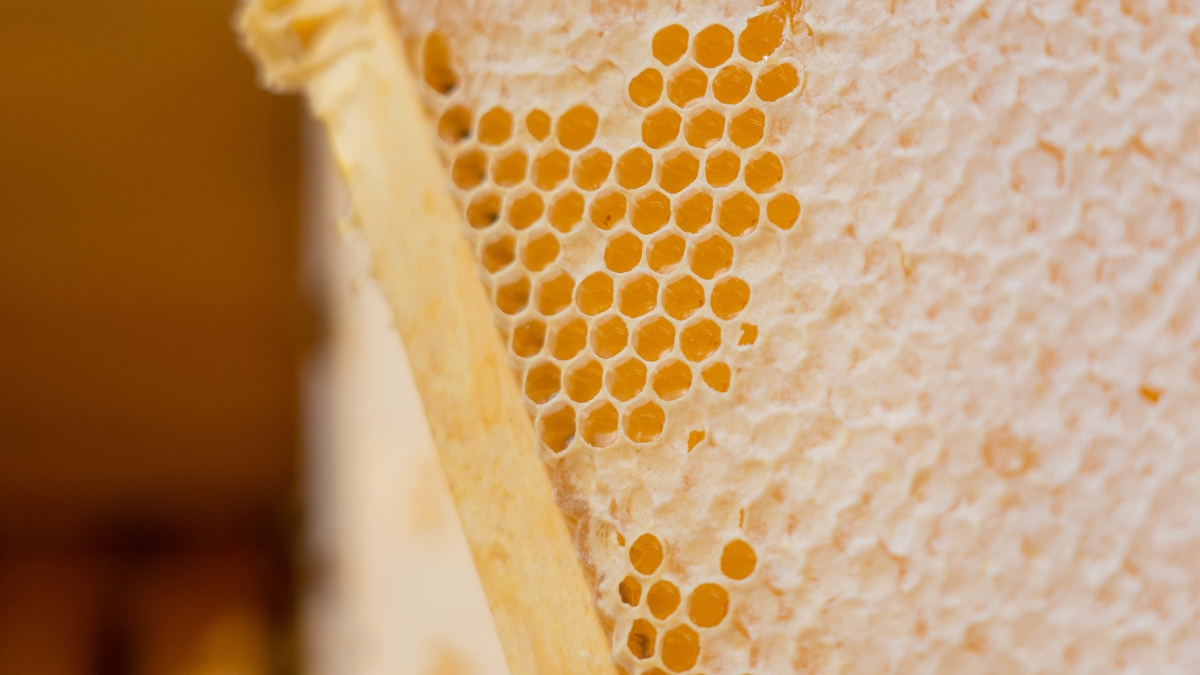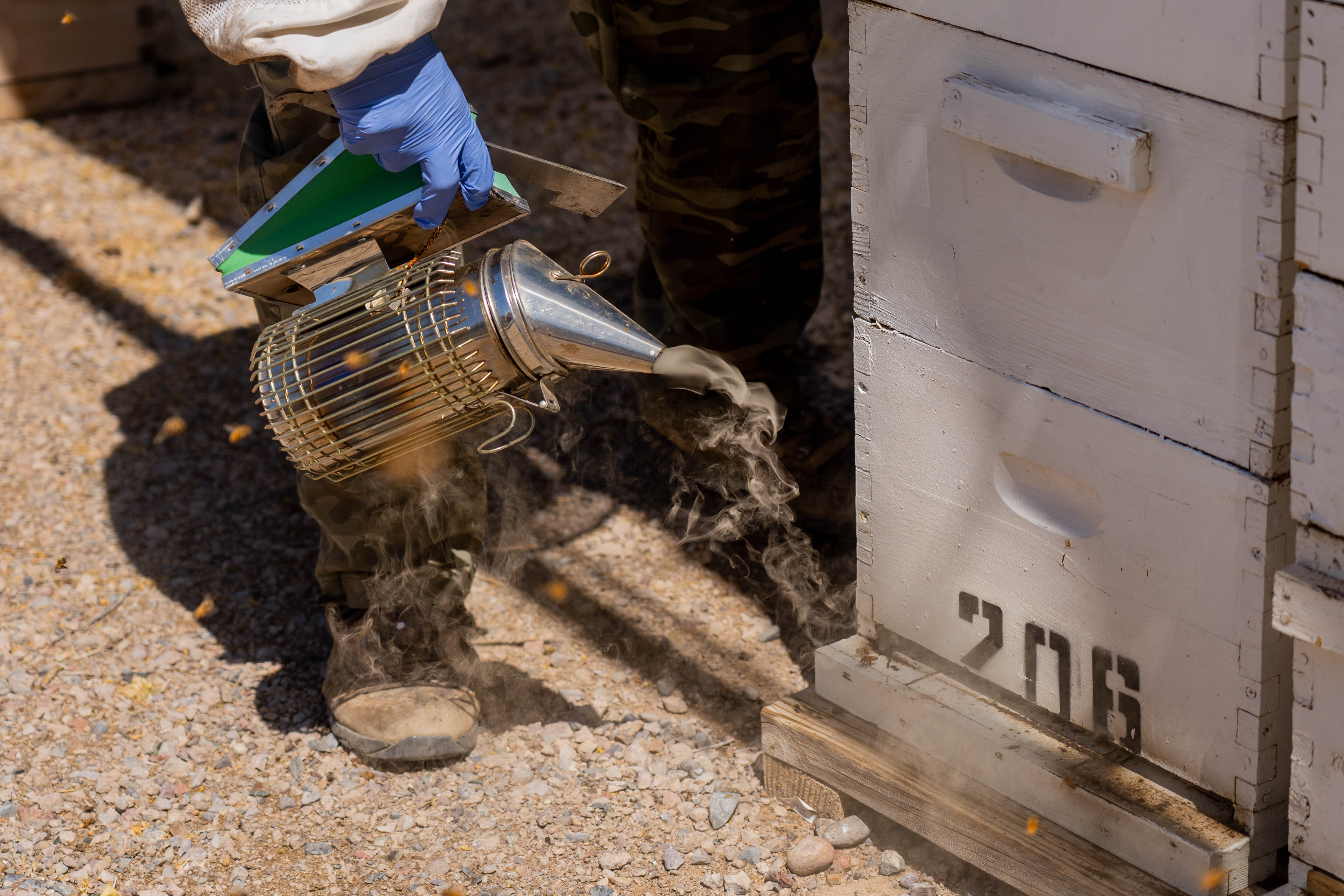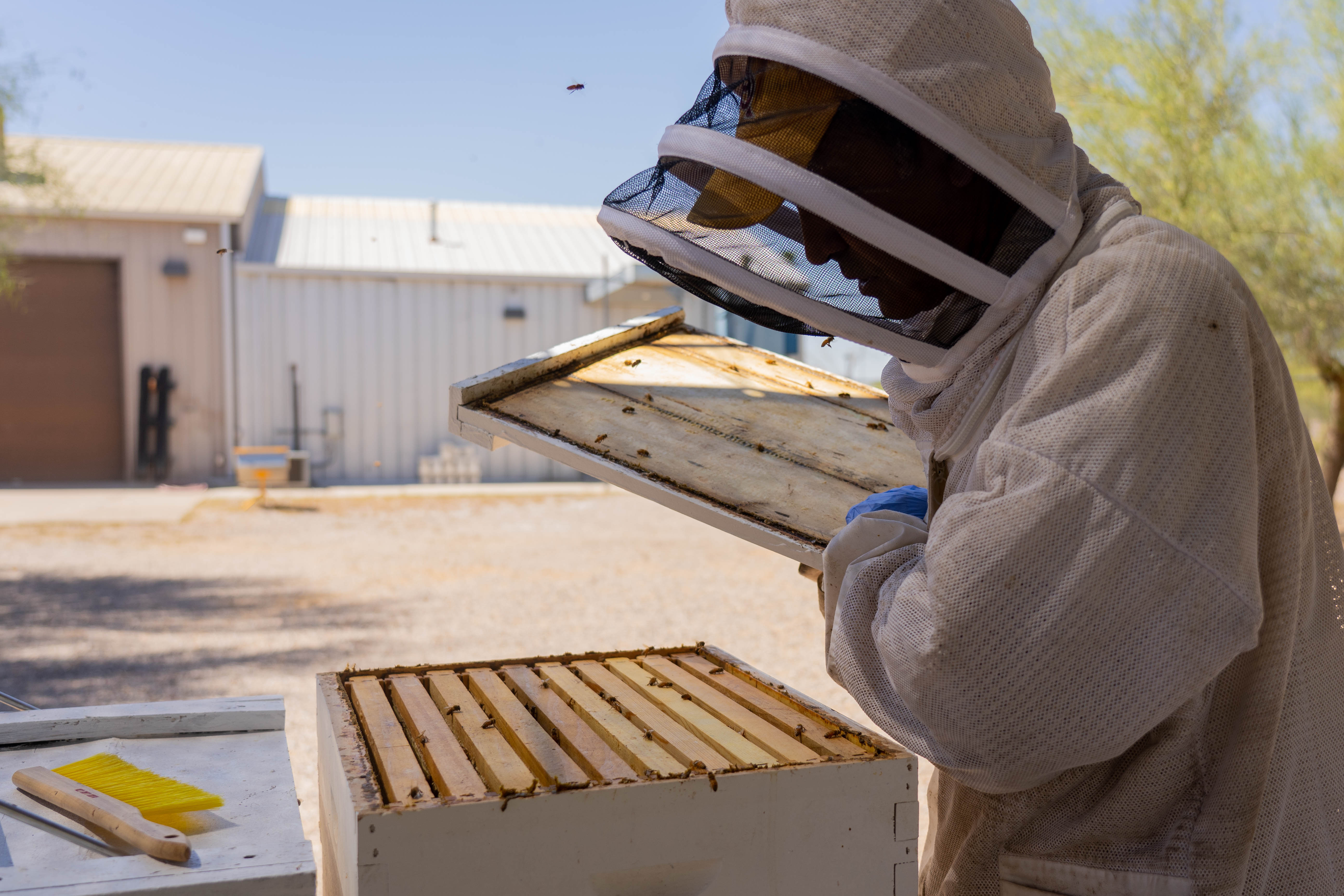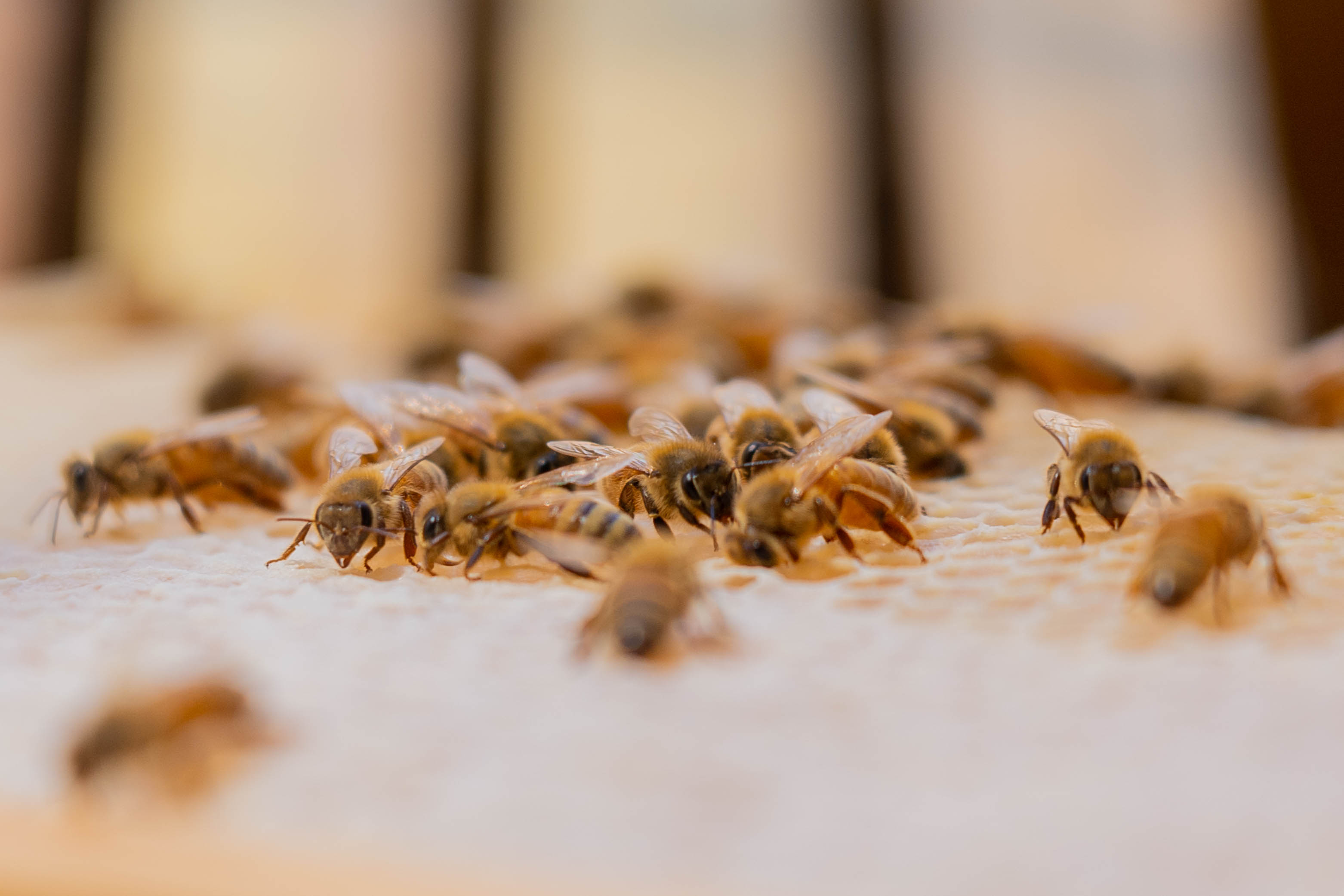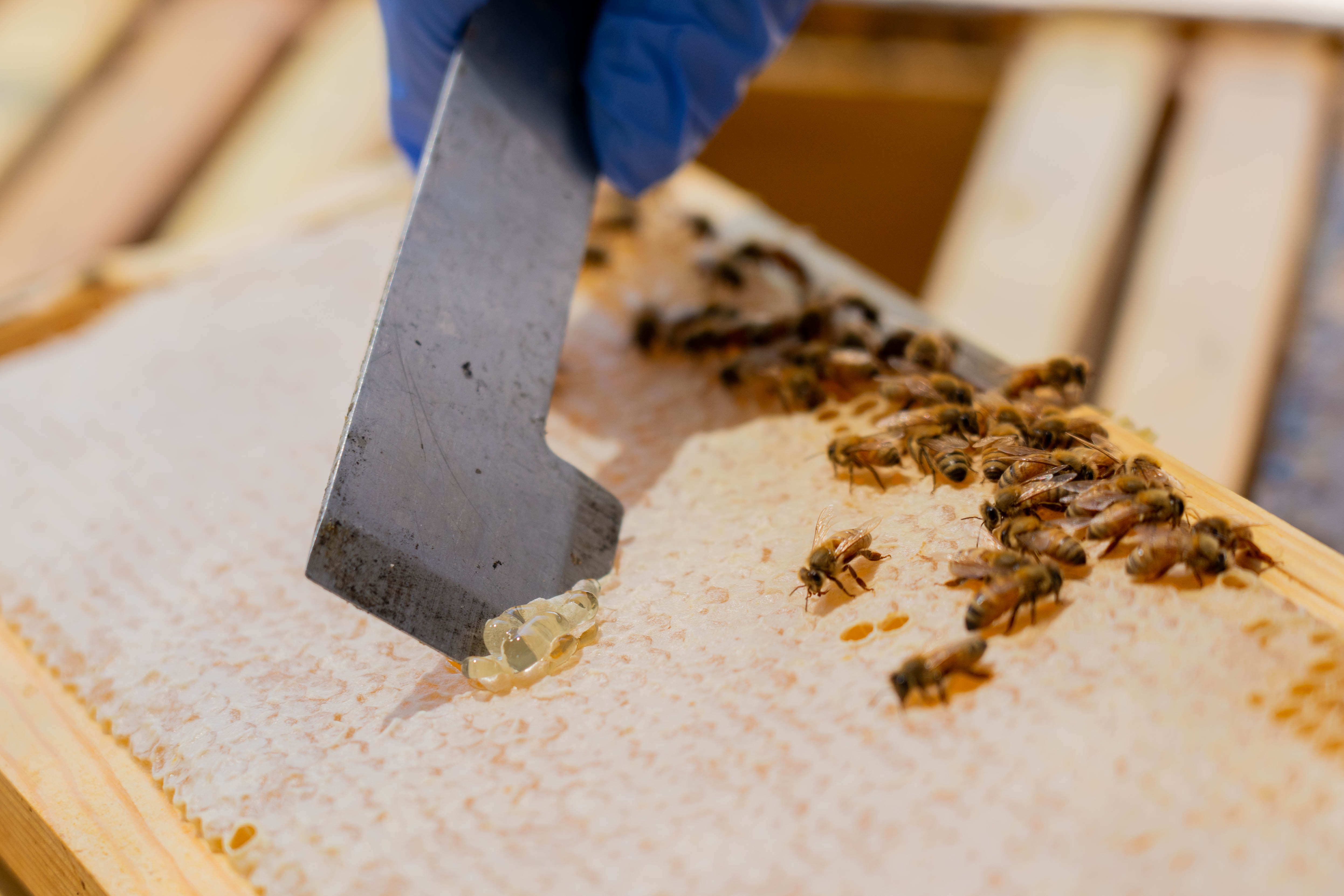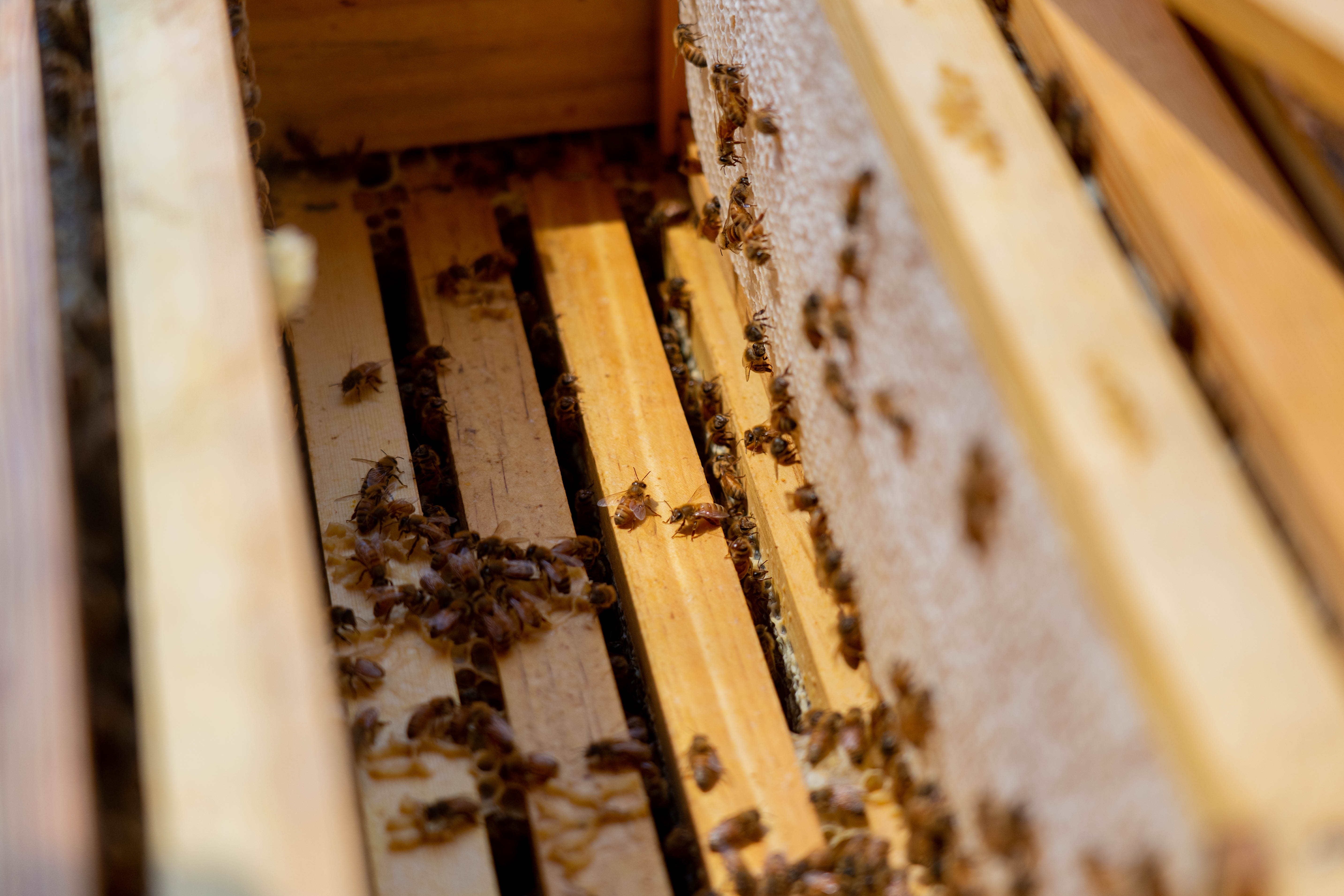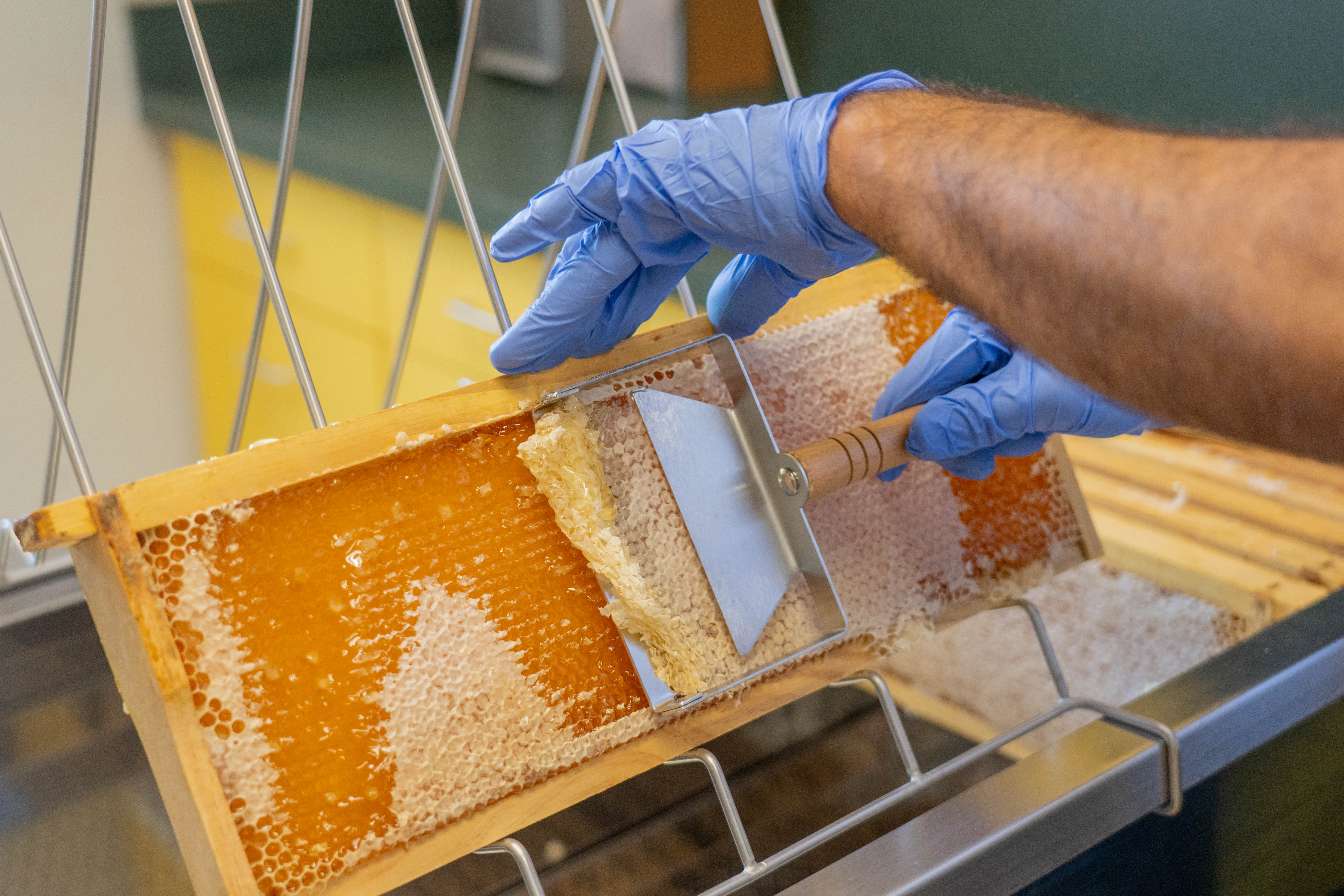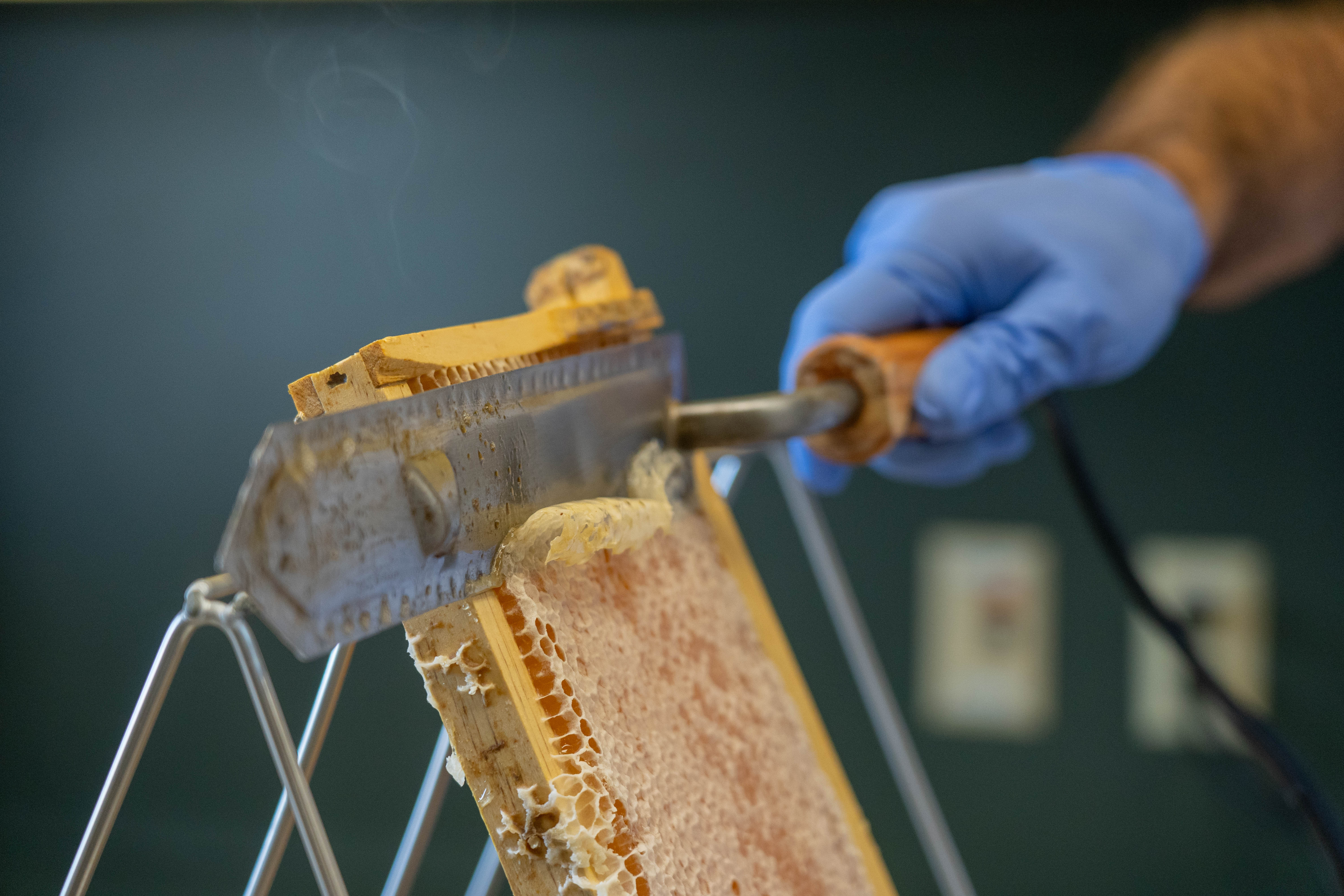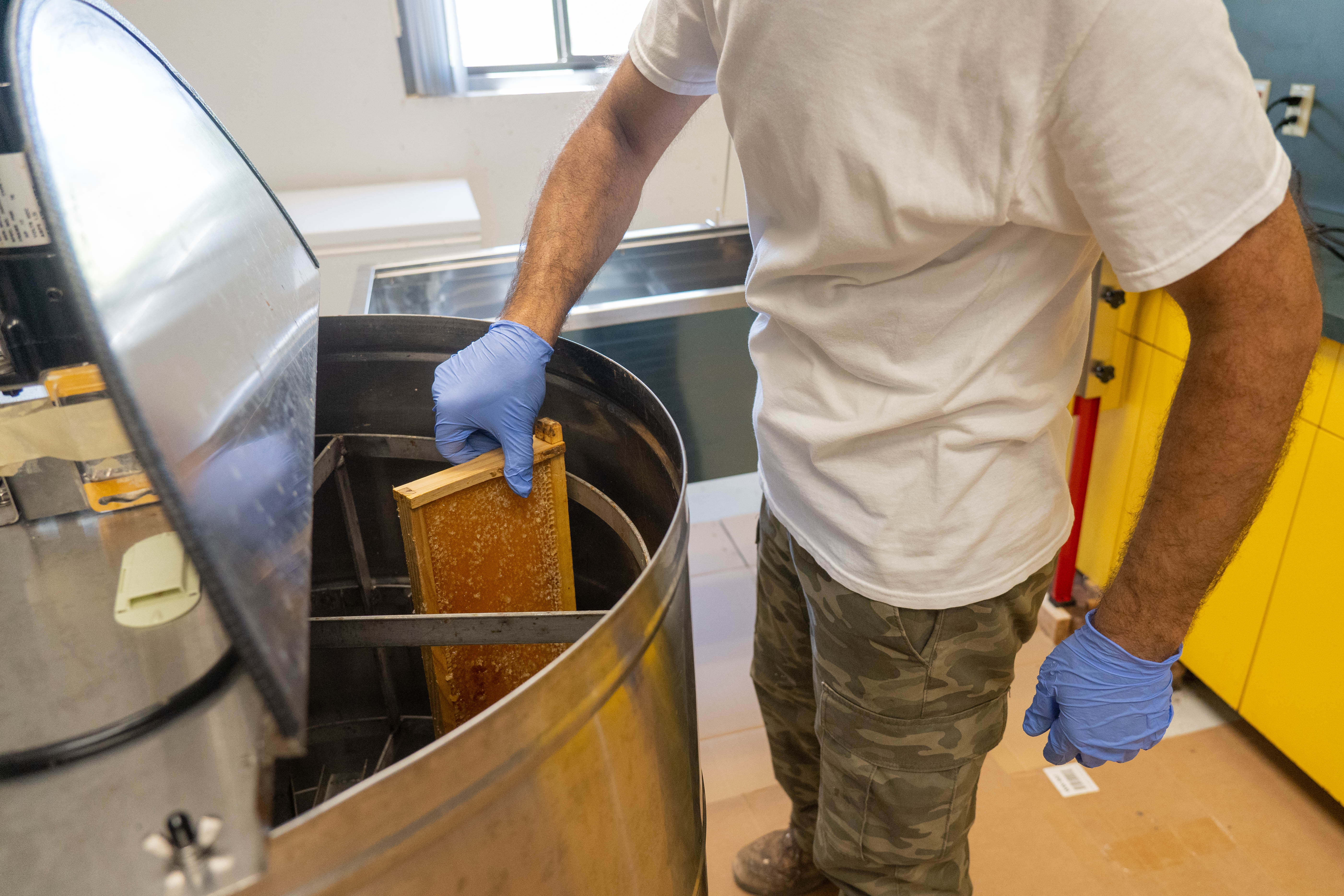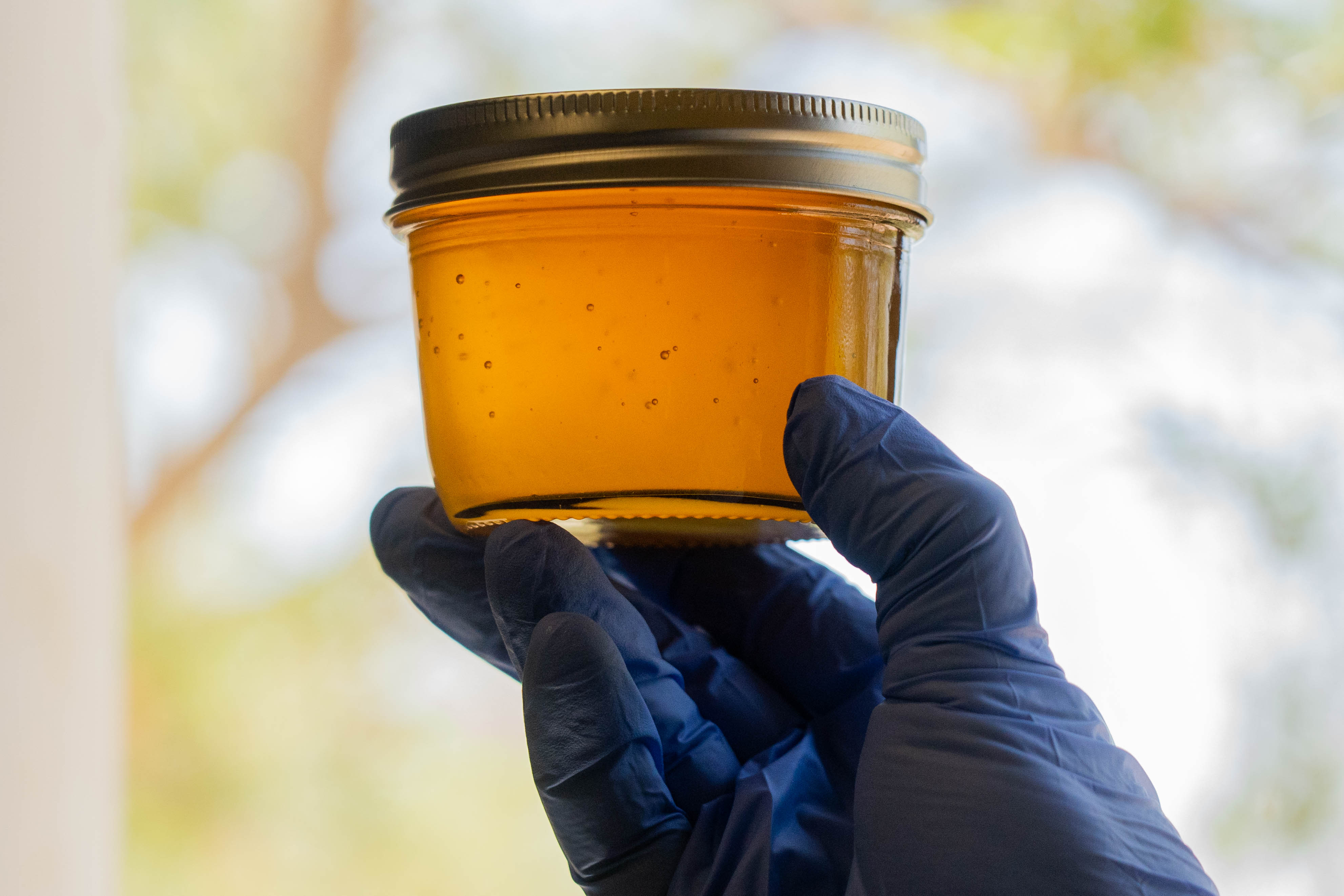It’s a warm Monday morning in mid-May as Cahit Ozturk dons his beekeeping suit.
Ozturk, a research technologist and associate researcher at Arizona State University’s Bee Lab Annex, is about to show a few visitors how honey is harvested from the more than 5,000 bees at the lab, located near the ASU Polytechnic campus.
The lab is one of the largest bee laboratories in the United States, where ASU researchers are studying bee immunization, social behavior and evolution, and more. (Students can even take hobby beekeeping courses there.)
The harvesting, which occurs once or twice a year, can produce up to 3,000 pounds of honey, all of which is donated to the Crockett Honey Co. farm in Tempe, which gives ASU a credit to cover expenses.
The harvesting is also done to give the bees enough space to produce brood, which is the eggs, larvae and pupae of honeybees.
Here, we take a look at the process.
First, Ozturk releases a puff of smoke around the hive entrance to calm the bees. After waiting a minute, he’ll gently open up the hive and deliver another puff of smoke, which is made of wood shavings.
Ozturk examines the 10 wooden frames inside the hive. Because the bees need the honey to survive, he will not harvest one of the frames unless there’s less than 20% moisture measured by a refractometer. But if it’s obvious the frame is, say, 90% capped (capping is the thin layer of wax built over the top of the honey), there is enough honey to be harvested.
“We make sure we leave some honey for them for winterizing and for their survival,” Ozturk said. “If we think they have more than their need, then we harvest some of the extra honey.”
Ozturk uses a metal scraper to strip away the capping from the honey. The European honeybees at the bee lab are bred for gentleness so they don’t fight for their honey like wild bees or other sub-species like Africanized bees.
“They are happy right now because they have plenty of nectar sources available,” Ozturk said. “So they don’t care. They’re telling us we can produce.”
Each colony can produce anywhere from 50 to 100 pounds of honey. It can take a week to 10 days to harvest all the colonies at the bee lab, depending on how much time Ozturk has.
Not all the colonies are harvested, though. Some haven’t produced honey beyond what they need to survive.
Ozturk will shake each frame in an effort to get rid of the bees. If that doesn’t work – inevitably a few remain – he takes a brush and gently whisks them off. The bees don’t seem to mind, as you can see by the one who has landed on the brush.
Inside the bee lab, Ozturk begins scraping away the capping. He will use different instruments depending on the size of the capping, including an electrical knife and heating gun.
Ozturk uses the electric knife to scrape away the capping. The knife helps accelerate the process when the capping is wider on the frame.
Ideally, the temperature inside the room should be around 90 degrees. The warmer it is, the easier it is to separate the honey from the cells.
Ozturk puts a frame, with the capping scraped away, in the honey extractor. The extractor, which can hold 20 frames, spins until it shakes all the honey out. The honey is then filtered so it’s smooth and not granulated.
The finished product. Good as gold.
Photos by Samantha Chow/ASU. Copy by Scott Bordow/ASU News
More Science and technology

ASU to host 2 new 51 Pegasi b Fellows, cementing leadership in exoplanet research
Arizona State University continues its rapid rise in planetary astronomy, welcoming two new 51 Pegasi b Fellows to its exoplanet research team in fall 2025. The Heising-Simons Foundation awarded the…

ASU students win big at homeland security design challenge
By Cynthia GerberArizona State University students took home five prizes — including two first-place victories — from this year’s Designing Actionable Solutions for a Secure Homeland student design…

Swarm science: Oral bacteria move in waves to spread and survive
Swarming behaviors appear everywhere in nature — from schools of fish darting in synchrony to locusts sweeping across landscapes in coordinated waves. On winter evenings, just before dusk, hundreds…


